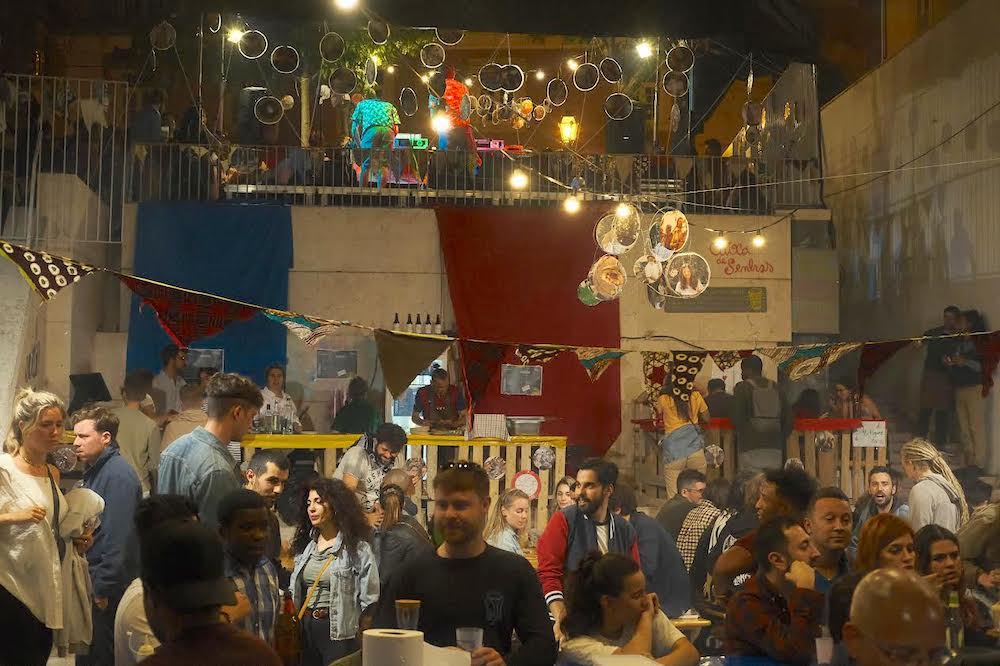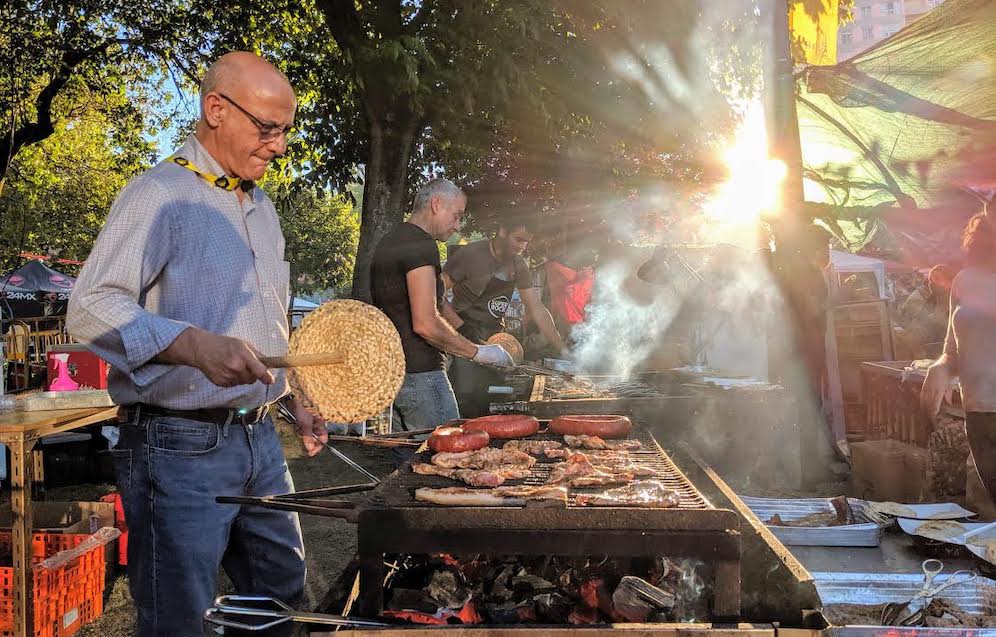The Festival of Santo Antonio (also known as Festas dos Santos Populares or Popular Saints’ Festival),
which takes place every year in Lisbon throughout the entire month of June, is like nothing I have seen
anywhere else.
It is spontaneous and structured at the same time. It is both genuine and cliché, local and welcoming, urban and communal.
Every year, sometime from May onward (because people get very excited and plan for Santo Antonio a month ahead) the streets of Lisbon – especially in the more historic neighborhoods of Alfama, Mouraria, and Graça – are suddenly covered with the typical decorations of this festival.
It is such a cheerful time.
Locals organise putting up those decorations themselves and delight in linking colorful hanging ribbons
between their houses and the houses of their neighbors.
The story of Santo Antonio goes back to 12th century, when this worshipped saint of the Catholic Church was born in Lisbon in 1195. Santo Antonio is commonly known as Saint Anthony of Padua. Some people mistakenly think of him as Italian, but the truth is that he was born in Lisbon but died in Padua.
A saint of many talents
He is believed to have been on his way back from a mission to North Africa when the wind took his boat
to Italy instead. He never returned to Portugal. Over the centuries, Santo Antonio became a highly
revered figure with prominent presence in many Portuguese churches and cathedrals. You can visit the church of Santo Antonio today in Lisbon; it sits opposite the city’s cathedral.
Santo Antonio is the patron saint of recovering lost items. When someone loses something, people pray
to Santo Antonio and then find whatever they have lost. He is also the saint of matchmaking in Lisbon.
It is believed that Santo Antonio helped poor couples collect the money they needed for marriage. Following the same tradition, every night on the 12th of June, the Cathedral in Lisbon organizes weddings for couples with financial difficulties.
The tradition has been going on from the 1950s and continues today. Sixteen couples get married on the night of the 12th with the ceremonies broadcast on television. The festivities also involve Saint Peter and Saint John, but are most famously associated with Santo Antonio.
That is probably why I find it fascinating how simultaneously well-organized and spontaneous the celebrations of Santo Antonio are. Lisbon’s City Hall, the Church, and even some civil society organizations all take part in making Santo Antonio what it is.
Locals are the real heroes

However, the locals are the real heroes behind the exceptional atmosphere of the festival. It is not uncommon to find a Portuguese grandma grilling sardines (the typical food of the season) and selling them in the street right outside her house. People may be offering you the traditional sour cherry liqueur from their windows of their ground floor for a symbolic price. Young men from the neighborhood act as DJs, playing Pimba music for open-air dances in which people of all ages participate.
Pimba is the most beloved cliché of the festivities. It is a type of Portuguese music which is upbeat, a bit corny (actually, very corny) with inappropriate lyrics (but subtle enough for kids not to get). This cliché is embraced and taken to heart by Lisboetas with so much joy and authenticity.
People really are having a great time.
Random strangers dancing together, the freshest fish in Lisbon, endless cool beer on tap – and a whole night of partying costing less than ten or fifteen euros.

The big night
The night of the 12th of June is the craziest as it is the Day of Santo Antonio. Festivities peak from the 12th to the 13th. The streets become extremely crowded, especially in the traditional Lisbon neighborhoods. However, it is a crowd you just end up accepting as part of an atmosphere that is all very jolly and spontaneous.
Festivities which are typically less overcrowded than Alfama and Mouraria but equally authentic are in the tiny neighborhoods of Madragoa and Bica.
The Festival of Santo Antonio is an authentic Portuguese carnival experience. The first two weeks of June in particular are the best to attend. It is a wonderful time to visit Lisbon and get a real flavour for what the city has to offer. Moreover, it is a great way for expats to see a whole other side to Lisbon and its locals.
I went with my friends on the 2nd of June this year, and I have to say that the return of the festivities after two years of COVID-related disruption was so refreshing. People were extra excited to be back amongst the much-missed happy atmosphere of June in Lisbon.
(Editor’s note: Your can see more of Samuel Miller’s work here.)
Sarah Nagaty has a PhD in cultural studies, She’s lived in Portugal for six years.
As a student of cultural studies, Sarah is drawn to what connects people from different backgrounds to new cultures and places, how they relate to their new surroundings and what kind of activities they could engage with in their new hometowns.















